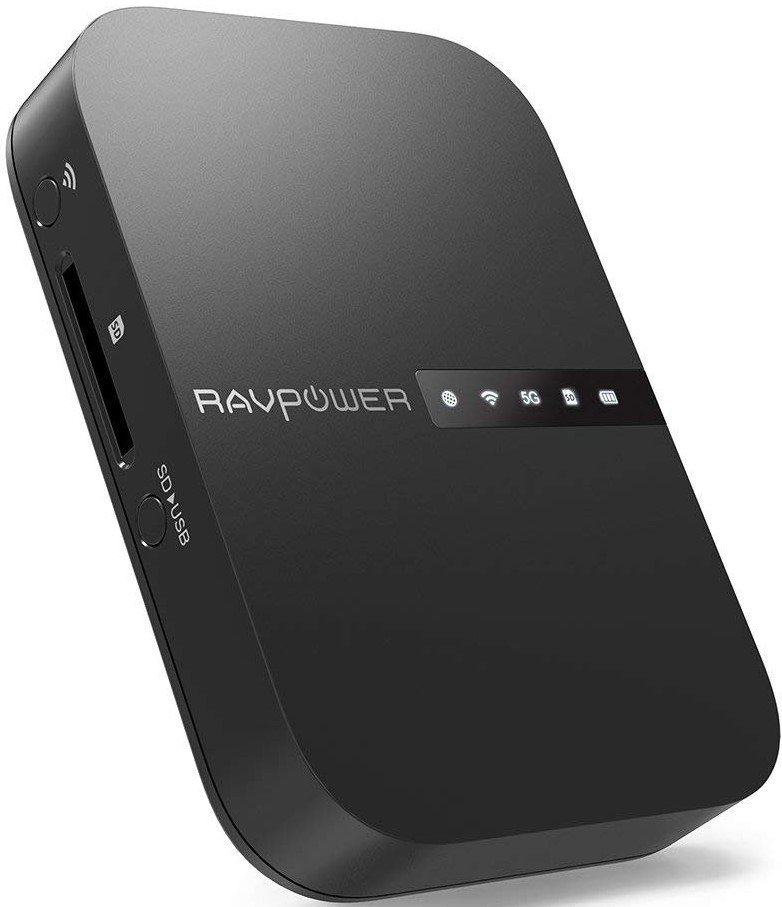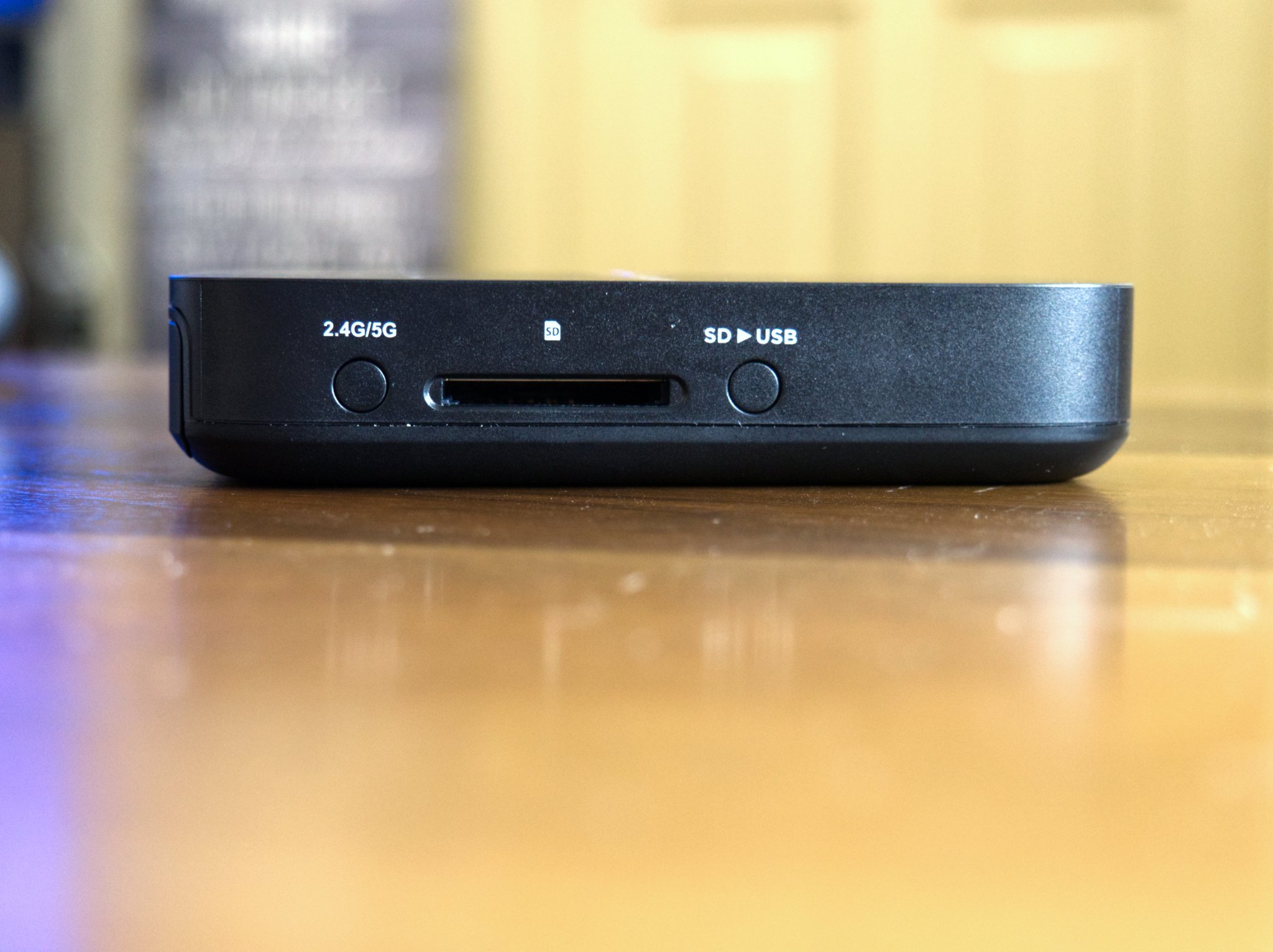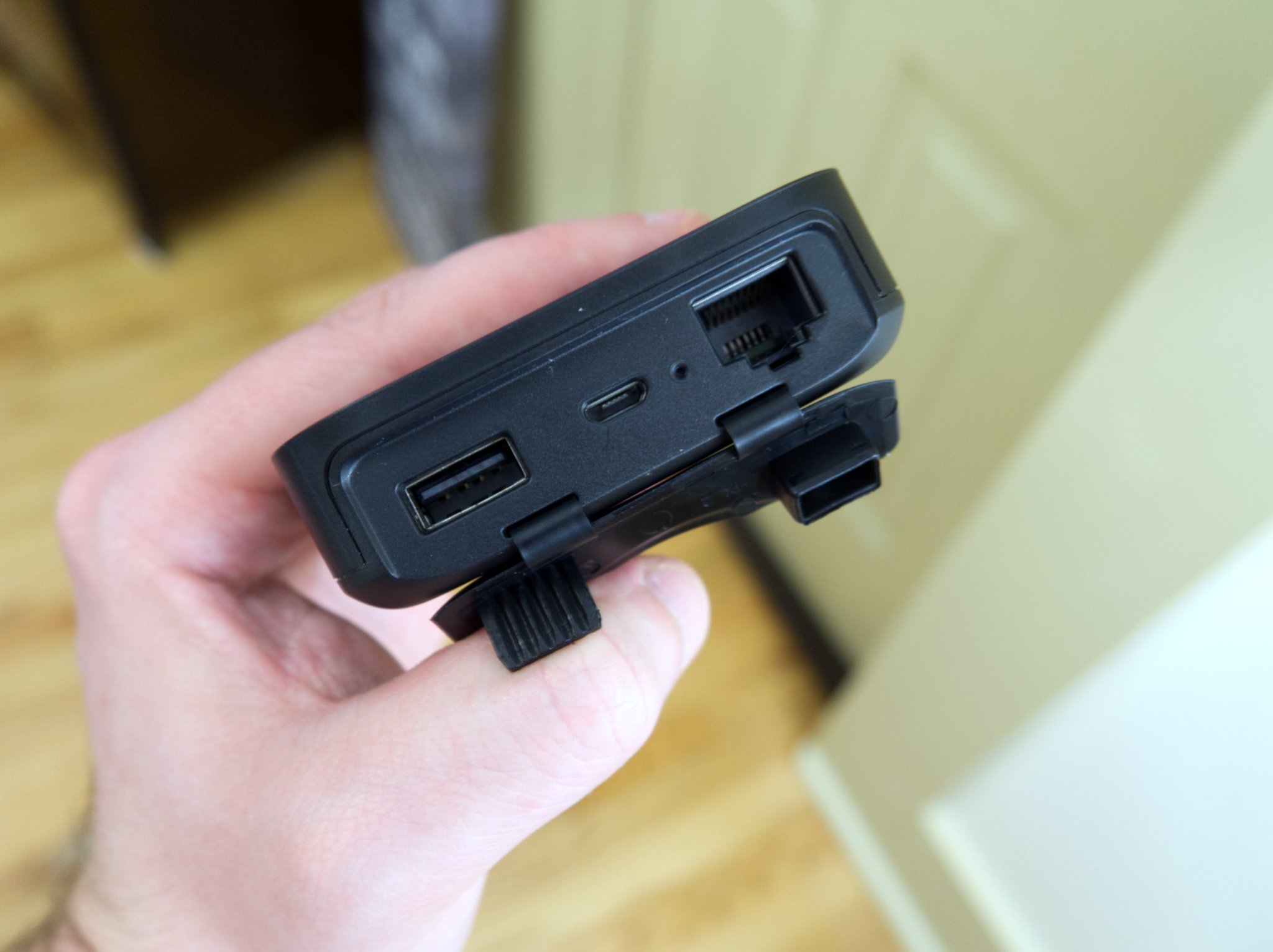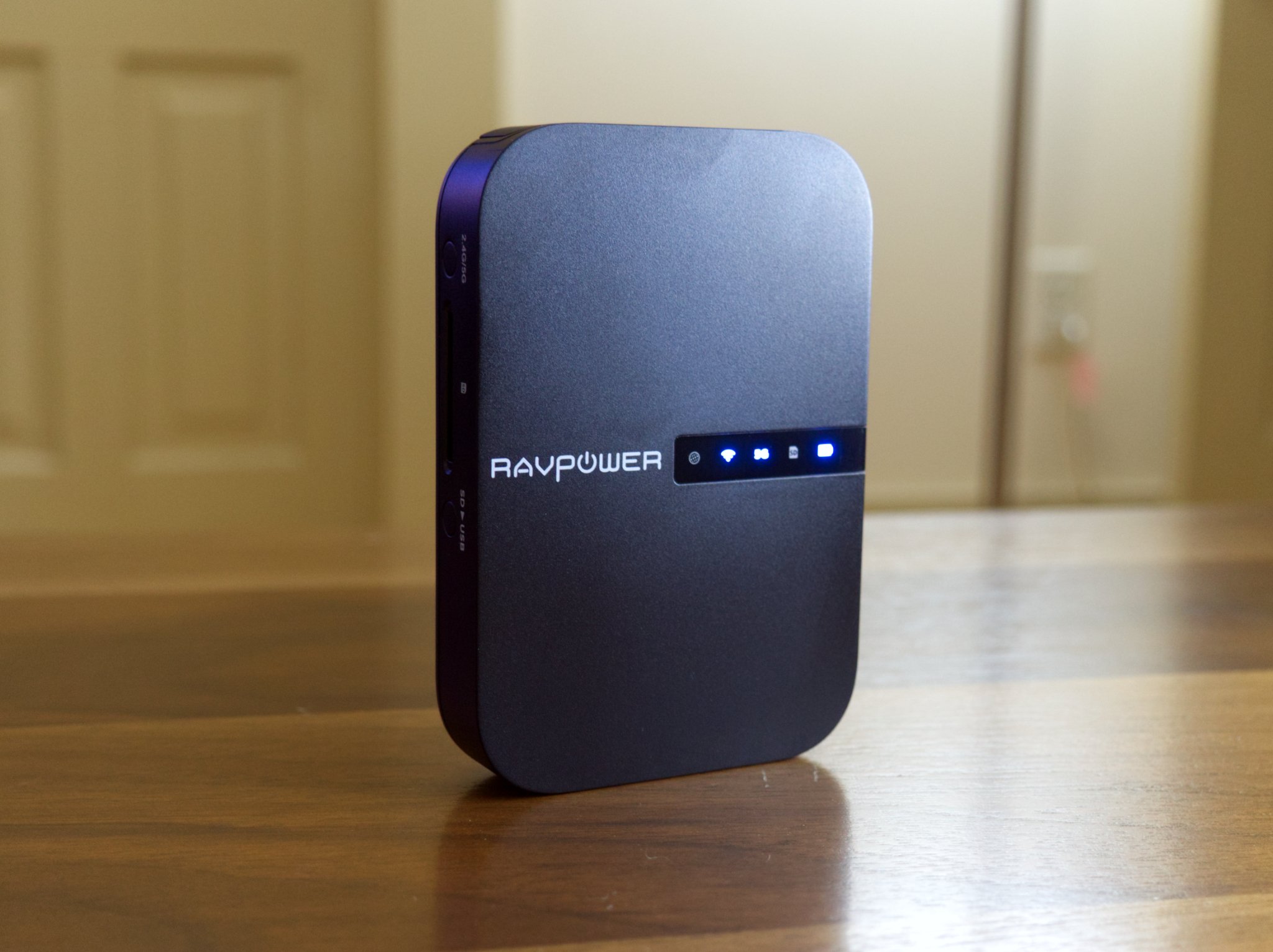Travel routers belong to a category of devices that definitely caters to a niche audience. It's no doubt useful to have your own personal network jacked into a hotel's network while on the go, but it's probably only something worth investing in if you travel a lot. But what if you took a travel router and injected it with some light NAS features and made it double as a personal backup battery?
That's just what RAVPower's Filehub aims to do. With a USB port, SD card slot, and a dedicated app to facilitate file transfers between the two, it's more than just a travel router. But it's this same Swiss Army knife approach that makes the Filehub a bit of a mess.

$48 at AmazonBottom line: The RAVPower Filehub is interesting in theory, but its Swiss Army Knife approach makes it more confusing than useful.
For
- Convenient size
- Tons of features
- Decent connection speeds
- Battery backup
Against
- Confusing setup
- Mobile app is a mess
- Connectivity is hit or miss
- File transfer is slow
What you'll like about RAVPower Filehub

There's something to be said about RAVPower's goals with the Filehub. Not only is it meant to act as a personal router that you can tack on to any Ethernet connection, but it aims to be your one-stop shop for backing up files, too. That can be done through a couple of different methods using both the SD-card slot on the side of the Filehub, along with the USB port that sits on its rear.
In fact, you never have to even use the Filehub as a router if you want to do a quick backup. Just attach an SD card and a USB storage device at the same time, and you can use a dedicated button on the Filehub's side to perform an instant file transfer from the SD card to your USB device. All of this is made a little bit easier if you are wirelessly connected to the Filehub's 2.4GHz or 5GHz Wi-Fi bands, however, as you can also move files straight from a mobile device over to storage connected to the Filehub with the Filehub app.
When acting as a router, the Filehub performs well. I never encountered any trouble actually connecting and staying connected to either the 5GHz or 2.4GHz bands. You will experience a more limited range than your standard router, but it's unlikely you'll have to stray too far away from the Filehub given its purpose anyhow.
Internet speeds were relatively solid throughout my testing as well. RAVPower claims you can hit speeds of up to 433 Mbps on the 5GHz band and up to 300 Mbps on the 2.4GHz band. I didn't approach those speeds in my own testing with my 200 Mbps home internet connection, but I was still able to maintain a perfectly reasonable 95 Mbps — more than enough for web browsing and streaming.
Battery life was also fairly strong and lasted a full workday. It comes packed with a 6,700 mAh battery, which is what powers it when using it as a router or performing file transfers. What's nice about that internal battery is that it can double as a power bank, allowing you to connect a phone or tablet to the USB port to charge up your devices.
All of this is packed into a relatively small package that makes the Filehub easy to transport. The device measures around four inches long and about three inches wide, so it's easy to toss in a bag and hit the road.
What you'll dislike about the RAVPower Filehub

As much as I was attracted to the Filehub for its features, actually using it is a messy experience. A large reason for that is the confusing process of figuring out the combination of button presses you have to endure to use the Filehub properly. While you'll eventually get these down if you use the Filehub long enough, I found myself consulting the manual far more than I'd like.
When you turn the Filehub on, the Wi-Fi bands are off by default, which is likely a battery-saving measure in case you just want to use it as a power bank or quickly move files with the one-button transfer feature. To turn on the Wi-Fi bands, you have to hold down a dedicated side button for three seconds. But where you'd think this would turn on both bands, that initial process only turns on the 2.4GHz band. You have to perform the same three-second button press to turn on the 5GHz band, which then switches the router to only broadcast that band. In order to get both bands working, you're required to go through the process one more time.
It's understandable that RAVPower would set things up this way to save power; you're working off a limited battery capacity. However, it's needlessly complex and time consuming to get up and running with both bands. A more elegant approach might be to make band switching available with a quick press of the button because it's doubtful you're going to suffer from many accidental button presses in situations where you'd be using a travel router.
The Filehub also failed in one key area: internet connectivity. That's not to say I couldn't get connected, but I couldn't get it to work as a standalone router connected straight to my modem. I was only able to get the internet up and running by connecting the Filehub in access-point and bridge modes in combination with my usual home router. This could be some configuration issue on my end, but directly connecting the Filehub to a modem is the simplest setup for a router, and it's disappointing to see this fail.
Finally, there's the mobile app. While it certainly looks nice, actually using it was an exercise in frustration. I like that the home screen tells you exactly how much space is taken up and what's free on storage that you have connected to the File hub, but actually viewing and transferring files is laborious. Loading file previews takes a fair amount of time, and the interface isn't clear when a file transfer has finished.
You can also connect to the storage attached to Filehub via a browser on your PC to view and move files. However, the process is somewhat slow and the interface is about as barebones as you can get.
So should you buy the RAVPower Filehub?

RAVPower had a unique idea with the Filehub, and I can see it being somewhat useful for a niche audience. However, it lacks quite a bit of polish and there are several issues with the process of getting connected and transferring files. It feels like it's trying to be too many things at once.
If you can see yourself needing a NAS-lite on the road for transferring or accessing files from several devices to storage attached to a central location, yes, the Filehub may be worth checking out or at least considering. Similarly, the one-button transfer for moving files from the SD card to USB storage is a nice touch. However, going a more direct device-to-device route with a dongle for your phone or laptop would be a better, and possibly cheaper, option. So if these features don't seem like something you genuinely need, I'd probably pass on a purchase.
Dan Thorp-Lancaster is the former Editor-in-Chief of Windows Central. He began working with Windows Central, Android Central, and iMore as a news writer in 2014 and is obsessed with tech of all sorts. You can follow Dan on Twitter @DthorpL and Instagram @heyitsdtl.


